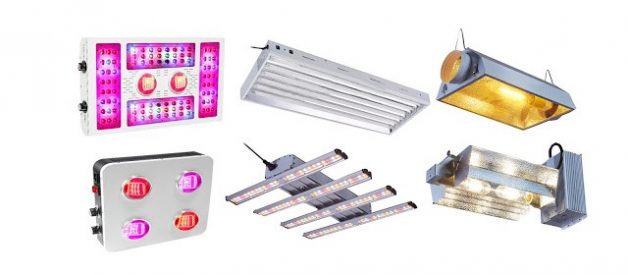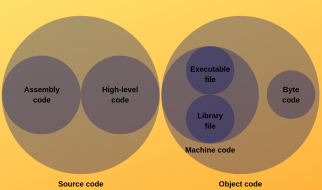What Is Hydroponic Cannabis?
The common nickname for cannabis ? ?weed? ? comes from its ability to grow almost anywhere, under varying conditions and different climates. ?Hydroponic cannabis? simply refers to plants grown using a nutrient-water solution and an inert growing medium rather than nutrient-rich soil. This method could be something as basic as hand-watering pots of inert medium with a nutrient solution. As discussed in the first part of this series, sophisticated systems with multiple pumps, timers, and reservoirs can take some of the daily labor out of growing, but they require more maintenance and setup time as well as a greater initial investment.
Cannabis growers have been using different hydroponic methods for many years as a way to maximize yields and speed up growth, the two main advantages of soilless growing. Working with soils indoors can be inefficient and difficult for a number of reasons:
- You may not be able to recycle soil
- Susceptibility to pest problems
- Difficult to determine proper amount of nutrients
- Need to carefully monitor soil pH
- Soil quality significantly influences the final product
With some hydroponic methods, you get to use small amounts of grow media that can often be reused while also precisely controlling what nutrients the plants are receiving and pH levels. With such levels of control, growers find that their buds are bigger, healthier and more potent.
Whether you have grown cannabis before or have no experience growing cannabis whatsoever, hydroponics can be a great way to produce cannabis in any size space. At first it can be confusing and slightly overwhelming, but by learning the basics you will come to understand it?s not as difficult as you imagined.
Advantages of hydroponics weed growing for beginners
There are a lot of benefits you acquire by hydroponics growing of the weed. The benefits of growing hydroponically include the following:
Fast growth
Growing hydroponic weeds ensures that the plants grow faster than with traditional methods. This is because they come in direct contact with the nutrients and can absorb more of it. Most of the experts have said that weed & cannabis plants grow 20% more quickly in hydroponics rather than in soil.
Large quantity
Growing weed hydroponically allows you to harvest in large quantities. Even in this case, the yields are about 20?25% more than that of the soil growth. You will need less space for each plant to grow.
No weeds
Gardeners usually have a tough time cleaning up the mess caused by the overgrowth of weeds. You need to keep a check on the growth and pull out when it is in the soil. Though, this is not the case with hydroponics growing. You can?t get overgrowth of weeds in the soil because there is no soil.
Less disease and pests
Many plants are usually damaged due to the soil-borne diseases. However, with hydroponic growing, you are saved against that risk since no soil is used. The usage of soil usually caused a lot of diseases and pests which makes it tough for the gardeners to control the environment.
CHOOSE A GROWING MEDIUM TO GET THINGS STARTED
Now that we have covered the history and benefits of hydroponic growing, it?s time to get things started. To begin, you?ll need to select a growing medium ? a substance that will hold in place the intersection of the stem and roots. From this location, the roots will grow down into the water in search of nutrients. The inert medium also allows good air access to the top of the roots. There is a huge list of different media used by cultivators, with those below being the most common. Each medium has its own unique benefits, and some work better with different systems. It?s all about experimentation when starting out to see which works best for you.
CLAY PEBBLES

As one of the most popular options, clay pebbles are excellent at aerating root systems. Clay pebbles sometimes require that growers alter the pH in order to provide an optimal growing environment, however, pre-altered pebbles can be purchased. You?ll need to place clay pebbles into a plastic hydroponic basket that has spaces for roots to grow through.
ROCKWOOL
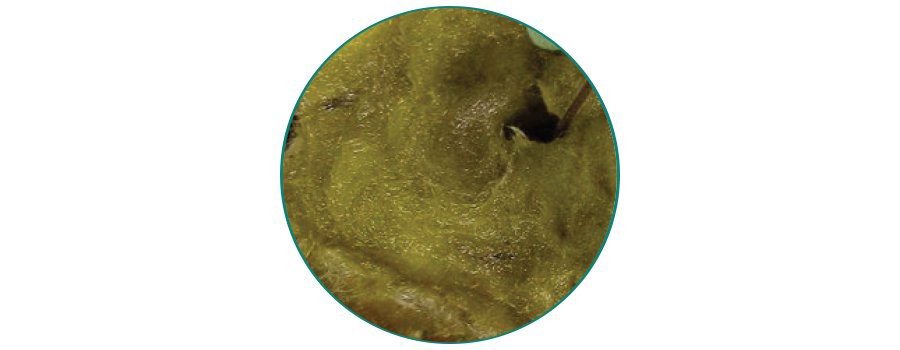
Rockwool is another popular choice, and is a substance created using volcanic rocks with a wool texture, hence the name. Rockwool has a tremendous capacity to retain water, which allows for good hydration of the upper root system. Rockwool can be placed within a hydroponic basket, but can also be lodged directly into the top of a bucket or tank lid without.
PERLITE

Perlite is a volcanic glass that expands when exposed to high temperatures. It?s often used in garden soils to provide aeration, which is exactly why it?s beneficial to use as a hydroponic growing medium for cannabis.
COCO COIR

Coco coir is a good sustainable option for a growing medium. As the fibre from coconuts, coco coir allows for good aeration and moisture retention. Coconut fibres are also known to protect roots from infection due to the presence of plant-stimulating hormones.
Choosing Your Hydroponic Garden System
Aeroponics ? This method of hydroponics goes without a growing medium, although a small amount may be used to germinate the seed or root a cutting. Plant roots are suspended mid-air inside a chamber kept at a 100% humidity level and fed with a fine spray of nutrient solution. This mid-air feeding allows the roots to absorb much needed oxygen, thereby increasing metabolism and rate of growth reportedly up to 10 times of that in soil and there is nearly no water loss due to evaporation. The mist is created by special nozzles to the root system on a regular basis. The roots are held inside a water proof and light proof container which helps create a high humidity area.
Continuous flow / Top feed system ? This is the system you often see pictures of. Using a 2? or 4? PVC tube with holes cut into the top at regular intervals for the plants to sit in a holder or pot. The nutrients are continuously fed down the PVC pipe over the root system.
Deep Water Culture (DWC) + Recirculating direct water culture systems (also known as RDWC) + BubblePonics ? This is a simple yet effective way to grow, it is similar to the mist Aeroponics system in some ways. However the concept is to submerge the plants roots in the nutrient system, now without air they would die, so you add an air rock like used fish tanks. If you pump significant air through the system the bubbles maintain oxygen to the roots and they grow really well.
Drip Irrigation ? A great way to save water and nutes. Used throughout large outdoor farming systems to cut down on waste, small droppers are placed right next to the stem or roots of the marijuana in their pots within the medium. Small drops of the nutrient system will drip out regularly to feed the plant. Very low evaporation and good for stealth grows too because it is silent.
Ebb and Flow ? As discussed above the nutrient solution floods a tray situated above the reservoir and then ebbs back into the reservoir in the process feeding the plants with their roots situated to the tray.
Nutrient Film Technique (NFT) ? Similar to the Ebb and Flow technique but it is more circular. The tray above the reservoir is tilted and the nutrients fed in from the top and let to drain in a thin film down the tray back into the reservoir, it lets roots feed and have access to air.
SELECTING A STRAIN FOR HYDROPONIC GROWING
Strain selection is an important factor of hydroponic growing. Plants grown within these systems are free to uptake nutrients extremely fast, which often results in explosive and rapid growth. For this reason, selecting a large, towering sativa variety won?t be your best choice, especially if your system resides within an indoor grow tent.
Smaller and more compact strains are ideal for indoor hydroponic systems. Beginning with a smaller strain is advantageous for several reasons. For one, it will let you cultivate several plants within a smaller space, allowing for more diversity and potentially bigger yields. Additionally, if your plants do go through a growth spurt, you?ll have room to deal with such sudden surges in height.
Below are two strains that we recommend for hydroponic growing.
WHITE WIDOW
White Widow is a perfectly balanced hybrid strain that features 50% indica genetics and 50% sativa genetics. She was created using parent strain White Widow S1, and provides a well-balanced high that stimulates and excites the mind whilst relaxing and stoning the body. A THC level of 19% ensures a powerful psychoactive experience that lasts several hours. These flowers contain a terpene profile that emanates grounding tastes and smells of earth and pine.
White Widow will reach a height of 60?100cm when grown indoors, making her an ideal candidate for the spatial demands of a hydroponic growing operation. Expect good yields of 450?500g/m after a flowering period of 8?9 weeks.
ROYAL DWARF
Royal Dwarf presents another logical option for an indoor hydroponic setup. This strain combines Skunk and ruderalis with the aim of creating a compact plant capable of good yields and moderate potency. Royal Dwarf is sativa-dominant and offers a motivating and inspiring head high fuelled by a THC level of 13%. Each hit of this strain is infused with tastes of sweetness complemented by notes of citrus.
Expect indoor plants to reach a stealthy height of 40?70cm, produce yields of up to 200g/m, and run from seed to harvest in as little as 8 weeks.
Set Up Your Hydroponic Cannabis Growing System
There are numerous setups for growing hydroponically with varying benefits that were discussed previously here. And while there are several types of hydroponic setups that don?t use any type of growing medium at all, many of them still use some sort of substrate to support root growth.
Various materials all provide slightly different benefits and drawbacks, so some thought should be put into choosing the right medium for your cannabis plants. In this article, we are going to be utilizing the drip line hydroponics technique.
While this system is built from the ground up, it should be noted that there are plenty of plug and play systems available for those looking for something that is easy to set up. Plug and play systems come with everything you need in a streamlined package to allow growers to get started on the right foot.
First we will start with the supplies needed. Keep in mind this is just an example, and depending on your space and desired results, many things can be tweaked in a hydroponic system to make it most beneficial to you. This list specifically outlines equipment needed to install your hydroponic system and does not include lights, fans, filters, and other basic needs for any hydroponic grow tents.
Hydroponic Cannabis Supplies:
3 or 5 gallon bucket (one for each plant)
Grow table
Clay pellets (enough to fill each bucket)
Rockwool cubes (one 1.5-inch starter plug per plant)
Reservoir tank (depending on the size of garden)
Water pump (the bigger the better)
Air pump
Air stone
Plastic tubing
Drip line
Drip line emitters (one or two per plant)
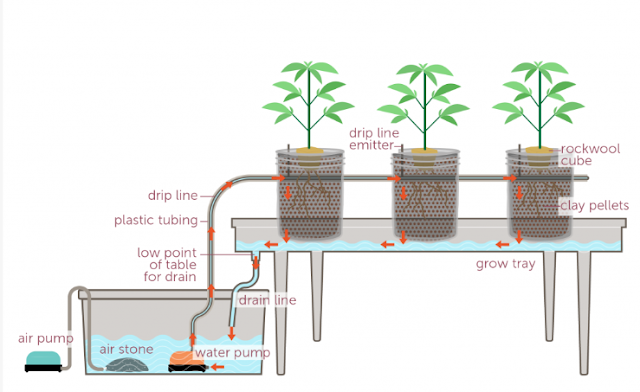
- First, set up your reservoir. Your reservoir is where your nutrient solution is held. A reservoir can come in all shapes and sizes depending on your grow space and size, and it holds the water pump and the air stone. It will have a line in from the air pump to the air stone and a drainage line in from the grow table. The reservoir will have a line out from the water pump to the drip line and the power cord for the water pump.
- Next you will create your grow table. The purpose of the table is to contain and return the excess water from the plants to the reservoir. To do this successfully, the table needs to have a low point where all the excess water will travel to. This low point is where you install the drain that will take the water back to the reservoir via plastic tubing.
- You can then add your 5 gallon buckets filled with clay pellets on the table. Before using clay pellets, you should soak the pellets overnight to allow them to become fully saturated with water for your plants to drink. Also, the buckets need to have holes drilled in the bottom to allow them to drain excess water onto the grow table. It is important that the holes are about half the diameter of the clay pellets to prevent the pellets from passing through or clogging the holes.
- Take the plastic tubing coming off of the water pump and run the line to the grow table. From here you can use drip line equipment to puncture holes in the plastic tubing and extend drip line to each bucket. Finally, attach drip line emitters to the end of the drip lines.
- From here you can run your system without plants to see if everything is functioning properly. The system should not have standing water anywhere. The air pump should always be running to keep the water in the reservoir oxygenated and moving, while the 5 gallon buckets and grow table drains any excess water back into the reservoir.
- At this point you are setup and ready to create your nutrient water solution in your reservoir. Below we will introduce information about nutrients and how to use them to grow your cannabis plants.
- Once your solution is ready, can introduce your plants. Take the starts or clones that have begun growing in rockwool and place them into the clay pellets. Insert the drip line so that moisture is reaching the rockwool and roots of your starts.
Nutrients for Hydroponic Cannabis
Marijuana plants, and in fact all plants, do not need to be in a living soil, they require nitrogen (N), phosphorus (P), potassium (K), calcium (Ca), magnesium (Mg) and sulfur (S). Those are the macroelements (the big ones) and the small elements known as microelements are iron (Fe), chlorine (Cl), manganese (Mn), boron (B), zinc (Zn), copper (Cu) and molybdenum (Mo). Growing marijuana indoors with hydroponics, water is enriched with these very same nutrient salts, creating a hydroponic nutrient solution which is perfectly balanced. An all purpose hydroponic nutrient solution with secondary elements like calcium, sulphur and magnesium and trace elements boron, copper, molybdenum, zinc, iron, and manganese will get you through all stages of growth. But depending on the stage of growth, you can adjust different nutrient levels needed at different times to optimize your yield. A 15?15?15 solution contains 15% Nitrogen; 15% Phosphorus; 15% Potassium. A 20?10?5 solution contains 20% Nitrogen; 10% Phosphorus; 5% Potassium. The percentage of the solution not used by N-P-K is trace elements and inert material. If you are buying hydroponic nutrients, get the powder kind that mixes with water. It is much cheaper over the long run when compared to pre-mixed solutions.
N = Nitrogen
P = Phosphorus
K = Potassium
Higher amounts of N are needed when the temperature will be below 80 degrees in the grow room during vegetative growth. 20?20?20, or 23?19?17, or 12?6?6, or something similar, with trace elements should do it.
If temperatures are higher than 80 degrees in the grow room, you need not worry about more N in the formula during vegetative growth.
During flowering the plant needs lots of P, regardless of temperature. 15?30?15, or 5?20?10, or 2?4?3, or something similar, with trace elements should do it.
Do not over fertilize your plants as too much fertilizer will kill your plants. If you under fertilize, plants will take longer to grow but will not die. Follow the mixing instructions on your hydroponic solution package, if you aren?t sure, use less rather than more.
As water evaporates it is absorbed by the plants, your water reservoir level will drop. Add tap water that has been aged 3 days or longer to the reservoir. I don?t add nutrient solution when I top up the tank, some people do.
Change the nutrient solution every 2 weeks. That is, discard the old solution and clean out the reservoir, pumps, and other equipment that is used with HOT WATER. After cleaning, add tap water that has been aged 3 days or longer to the reservoir then add nutrient solution. You only need to clean the cups and tubing the plants are in before you start a new crop. More detail on nutrients.
How to germinate the seeds?
If you are considering to grow hydroponics weeds on a large-scale basis, you will need to set up a garden inside a grow room. You can usually purchase the marijuana seeds online. The price of these seeds typically varies depending on the strain you choose. Thus, you will require to be very careful with the strain. You should set up the hydroponics garden and check if everything is working. You can then take your next step of hydroponics weed growing for beginners by germinating the seeds. If you have bought clones instead of seeds, you should not consider sprouting them.
There are a lot of mediums available in the market for the growth of the plant. Since you?re not using the soil, you will be in utter need of the medium as the substitute. One of the most used media include Rockwool. Although it does not offer nutrition, it can be a great support.
Place the seed in the midst of the nutrient solution and then submerge about 70% of the cube in water. Allow it to settle and germinate. If you notice growth in the seeds, you can take it out with the roots facing downwards, and place it in the nutrient medium to ensure growth.
Grow lighting for Cannabis Hydroponics
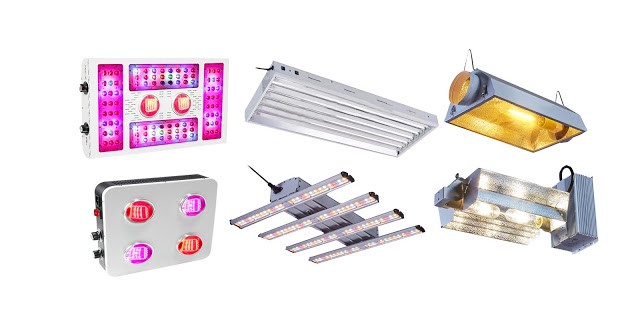
Since modern hydroponics began people have used high intensity discharge HID lights including Metal Halide (MH) or High Pressure Sodium (HPS) to grow marijuana and more recently with great success, LED grow lights. Metal halide light is close to regular room light or compact fluorescent light CFL and is more abundant in the blue and green spectrum?s which is best for vegetative growth. While high pressure sodium HPS offer light in the orange, amber and red end of the spectrum which is best for flowering stage (later) growth. Growers often use these two lights in tandem, MH for vegging and HPS for flowering or both at the same time. Marijuana grows well from 420 through 730 nanometres which can be covered in this method. HID lamps like the MH and HPS offer a lot of light but just as much wasted energy is emitted as heat. You will need to manage that heat with a good ventilation system. HIDs also require a ballast to operate so make sure you buy one of them. Expect to pay about $250 for a 600W HPS/MH digital ballast, bulb and reflector combo.
Full spectrum LED grow lights are what the pros have turned too now, we know some of the large greenhouses (think big name seed companies) in the Netherlands have turned too as they offer far more control, lower electricity costs while heat and space issues are decreased. Why are LEDs now a good option? The cost of LEDs, their power and the color they produce (spectrum) is tuned perfectly for marijuana growing. LED grow lights, in particular full spectrum LED grow lights, number of advantages over HIDs such as covering the full grow spectrum from seedling, vegetative and flowering stages, run on approximately half the electricity and have bulb lives of around 50,000 to 60,000 hours! A 1000W HPS is the equivalent to approximately 500W LED (true draw). Good LEDs run cool, have no fans or excellent silent fans and emit very little heat ? and do not require a ballast. LED grow lights are a great solution to the old HIDs
